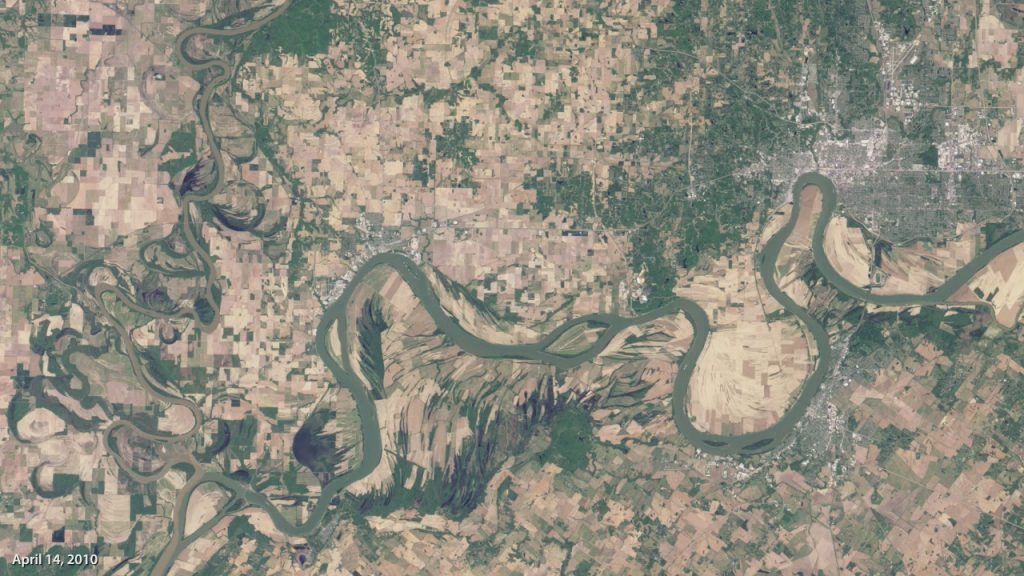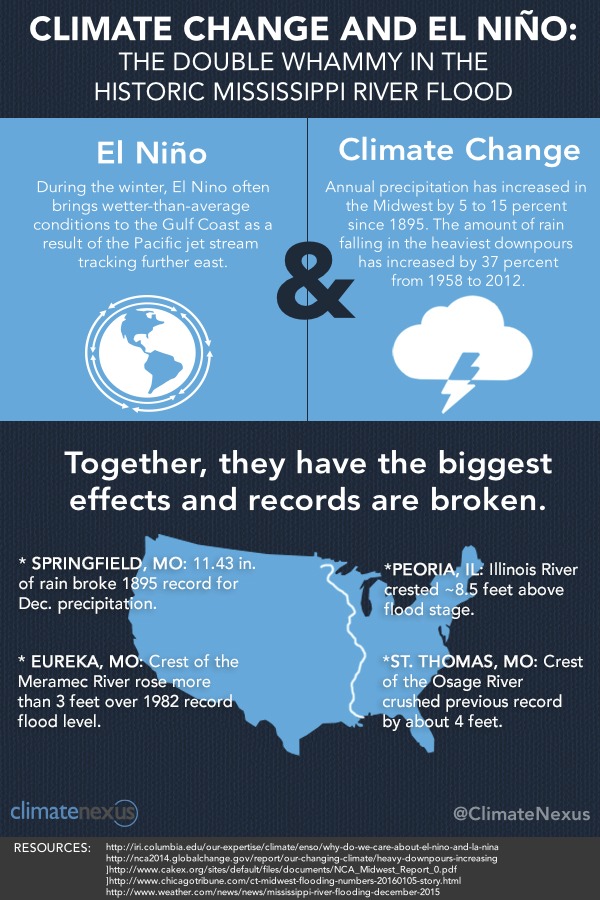The strongest El Niño on record and a climate-changed-warmed atmosphere have combined forces to produce a massive storm that caused record-breaking floods in the Midwest during the first week of 2016. The storm has killed more than 20 people and caused massive damage to homes and infrastructure. The Mississippi River basin was hit by rainfall that was two to six times above average prior to the flooding, a level of intensity triggered by record warm temperatures.
While the exact course of the extreme rains driven by El Niño are difficult to predict with confidence, those rains are likely to be charged with extra precipitation added in by global warming. A warmer atmosphere holds more moisture, and just as a bigger bucket dumps more water when it empties, climate models project that El Niño rains are likely to dump more water wherever they ultimately fall.
- Climate change contributes to increased flooding because warmer air holds more water, leading to stronger more frequent precipitation events. Precipitation in the Midwest has increased both in terms of the overall rainfall amount and the frequency of extreme events. Annual precipitation has increased in the Midwest by 5 to 15 percent since 1895, while the amount of rain falling in the heaviest downpours increased by 37 percent from 1958 to 2012.
- Flooding is a major economic risk in the Midwest. The 1993 Mississippi flood was the costliest flood in modern times after Hurricane Katrina. In 2008, another flood in Cedar Rapids incurred over $10 billion in damages. These historic floods were caused by persistent heavy rainfall. Research shows that the trend towards heavier rainfall events has resulted in an overall increase in flood risk across the region.
- Intensifying rainfall and flooding puts levees at greater risk. The risk of levee failure is a significant hazard, as the Midwest contains nearly 4,000 miles of levees, many of which are in poor condition.
- Current precipitation trends in the Midwest will likely continue. According to the Midwest chapter of the Third US National Climate Assessment, “Extreme rainfall events and flooding have increased during the last century, and these trends are expected to continue, causing erosion, declining water quality, and negative impacts on transportation, agriculture, human health, and infrastructure.”



